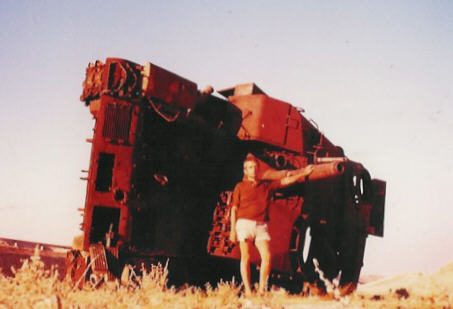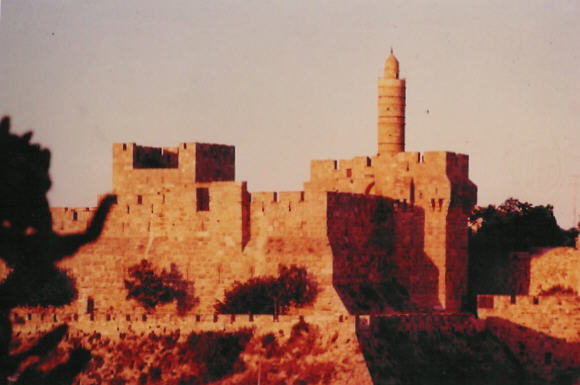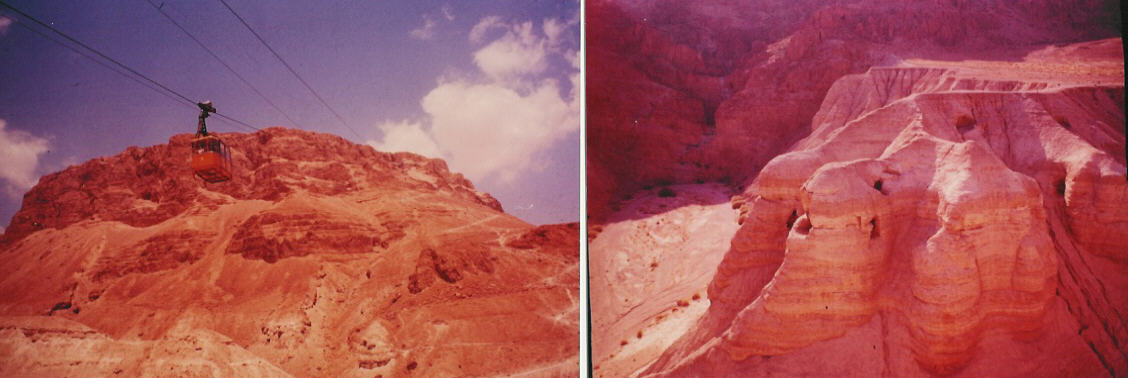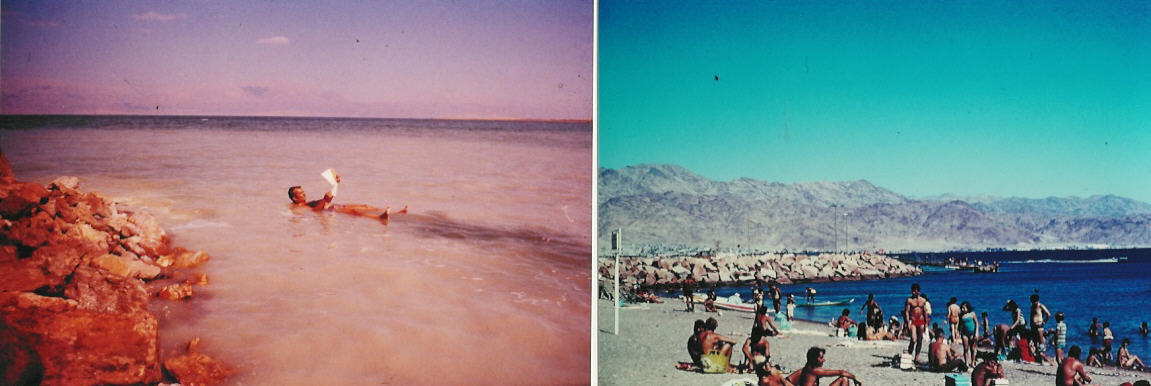

Israel (1972)
Our trip to Israel was thrilling in every aspect . . . archeological, religious, sociological and historical . . a history which dates back over 5,000 years to the time of the Cananites and which continued with the Greeks, the Romans, the Moslems, the Crusaders, the Turks on up to these most recent twenty five years of statehood. In fact, in my view, there are few chapters in history as exciting as that involving the creation of the State of Israel and the three ensuing wars fought in a quarter of a century to defend the new state.A Week in the Holy Land
 |
 |
Burned Out Syrian Tank Jerusalem - The Golden City
We drove from north-to-south and from east-to-west in a week covering only a little over 1,000 kilometers in total. Except for the very thorough searches at the airport on both entering and leaving the country, there is very little to remind the traveler of the tense situation in which the Israelis live their everyday lives. In fact, we found a much greater sense of war psychosis in Egypt when we visited there last year.
Jerusalem. We took a guided tour of Old Jerusalem in an initial attempt to sort out the centuries of history which this city has seen. One first impression was the overlapping of religious significance for the Christian, Jewish and Moslem faiths which centers in this one small location. An example is the Dome of the Rock which is built on Mount Moriah and to the Jewish faith represents the center of the universe and the spot on which Abraham was prepared to sacrifice his son, Isaac. On the very same spot the Moslems believe that Mohammed ascended into heaven.
The Christian holy places are a bit delusory . . . disagreements between the Protestants and the Catholics over the true site of Calvary, the manger in Bethlehem overwhelmed by Greek Orthodox ornamentation and unlike anything depicted on your last year’s Christmas card . . . and perhaps the most disappointing of all was the rock on the Mount of Olives, from which Christ was believed to have ascended into heaven.
The rock is housed in a domed building guarded by an old Arab who opens the door for an adequate tip to a dismal room encompassing the rock and filled with empty whiskey cases. One is forced to look beyond these things for the true historical and religious impact. Even the famed Via Dolorosa winds through an Arab market and without a guide one could never locate all the stations of the cross along the crowded street. Although not of religious significance to the Israelis, they have recognized their importance to Christians and are attempting to restore them to their proper dignity.
Dead Sea. Another day’s drive from Jerusalem took us to the Dead Sea, Sodom and Massada. The Israelis have open a new road along the west bank of the Dead Sea which provides a spectacular drive through the Judean desert. We spent the morning on top of Massada, where 960 Jewish men, women and children took their own lives during a Jewish uprising rather than to surrender to the Romans, whose siege they had resisted for over two years. The drive to Sodom, a few miles further along the road, took us to the lowest point on earth. . . 1300 feet below sea level.
 |
Massada Qumran Caves
We were careful not to look back as we left Sodom remembering what had happened to Mrs. Lot in a similar situation. We stopped for a swim in the Dead Se and have the necessary photos to prove that it is true that you can lie on your back in the Dead Sea and read a newspaper. In fact, you can hardly swim because you can’t get your legs under water.
Driving back we stopped at the Qumran Caves where the Dead Sea scrolls were found by a shepherd boy in 1947 . . . and on to Jericho, the oldest city in the world with a history dating back 10,000 years . We didn’t see Joshua but we did see what was left of the walls which he caused to come a-tumbling down.
The Sea of Galilee is impressive not only for its association with Jesus’ ministry (i.e. the Mount of Beatitudes, the multiplication of the loaves and fishes) but is also a beautiful spot for a refreshing swim in the hot midday sun.
Kubbutz Stay. We stayed overnight at the kibbutz at Ayelet Hashachar situated under the Golan Heights Many kibbutzes have established guest houses to supplement their agricultural incomes and this one was an oasis of green and flowers in an otherwise barren countryside. We were allowed to wander freely through the kibbutz and in the evening one of the residents held a slide and lecture show describing the life on a kibbutz. While only three percent of the population live on kibbutzes, they produces 25 percent of the agricultural output of the new country.
The turnover at Ayelet Hashachar was surprisingly low with over fifty percent of the members second generation kibbutzniks. Perhaps the most unusual aspect of kibbutz life to us was the collective approach to child raising where the children live together from two months on and only spend a few hours at evening mealtime with their parents.
From Galilee we turned back west to the sea at Acre, the old crusader stronghold where their castle and fortifications still present a prominent landmark against the blue Mediterranean. From Acre we drove to Haifa, Israel’s principal port and second largest city. We were met by an Israeli friend whom we’d known in Genoa and he treated us to a tour of his beautiful city . . which is truly charming . . . a cross between Naples and San Francisco.
Red Sea. Our last day in Israel we flew down to Eilat on the Red Sea. it was the closing of the Gulf of Aquaba to Israeli shipping that precipitated the Six Day War. Eilat is a booming town of 15,000 where fifteen year ago there was nothing but desert. One senses a pioneering spirit kin to the story of our far west. We drove out to the storied King Solomon’s mines which are producing copper again after three thousand years of inactivity. The guide tells an interesting story of how the location of the mines were rediscovered only after a careful examination of the references in the Bible.
 |
The Dead Sea The Red Sea
We finished the afternoon with a swim in the Red Sea and then took the evening flight to Tel Aviv flying back over the Negev Desert, the isolated kibbutzes down below, the Dead Sea and Massada, Bethlehem and finally Jerusalem, the City of Gold, just as the sun was setting. It was a perfect ending for a perfect and unforgettable week.